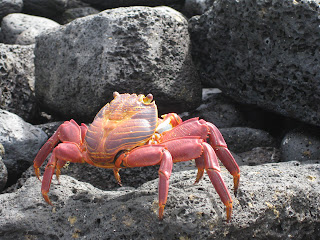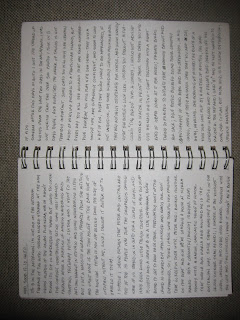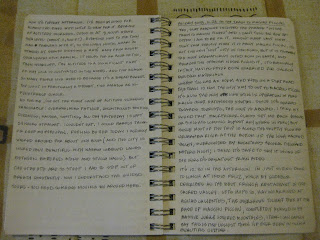
 Now that I´m safely back at sea level, (but only for one day, then it´s back up to 3,000M in Quito Ecuador) I think it´s time to explain my week in Cusco and Macchu Picchu. Cusco lies 3,200M, about 11,500 ft, above sea level, so I spent my first two days in the former capital of the Incas completely incapacitated by altitude sickness, despite copious amounts of coca tea. The remaining five days were jam packed with Inca ruins and that lush mountain countryside. See the Incas were a mountain people because it was the easiest part of Peru to farm. The coast is practically a desert. The Amazon is a dense impenetrable jungle. The area around Cuzco is like the bread basket of Peru, lush and productive. Only trouble is, it´s also extremely mountainous. To overcome this the Incas became incredible builders, first of terraces that stabilize the land and provide space for farming. These terraces are absolutely everywhere, testament to a massive program of building. And with the knowledge they learned from this, the Incas became expert builders, creating perfectly cut, dressed, fitted and interlocked walls without using any mortar or metal tools and involving stones up to 150 tons. These buildings and walls also use some nifty tricks to combat the incredible quantity of earthquakes that occur in the area, and a good proof of their masonry skills is the church of Santo Domingo in Cusco, which the Spanish built using stones from other Inca sites held together with mortar, but using the existing Inca Temple of the Sun as a foundation. The church has collapsed twice due to earthquakes, but the Inca foundations have remained unharmed since they were built over 500 years ago.
Now that I´m safely back at sea level, (but only for one day, then it´s back up to 3,000M in Quito Ecuador) I think it´s time to explain my week in Cusco and Macchu Picchu. Cusco lies 3,200M, about 11,500 ft, above sea level, so I spent my first two days in the former capital of the Incas completely incapacitated by altitude sickness, despite copious amounts of coca tea. The remaining five days were jam packed with Inca ruins and that lush mountain countryside. See the Incas were a mountain people because it was the easiest part of Peru to farm. The coast is practically a desert. The Amazon is a dense impenetrable jungle. The area around Cuzco is like the bread basket of Peru, lush and productive. Only trouble is, it´s also extremely mountainous. To overcome this the Incas became incredible builders, first of terraces that stabilize the land and provide space for farming. These terraces are absolutely everywhere, testament to a massive program of building. And with the knowledge they learned from this, the Incas became expert builders, creating perfectly cut, dressed, fitted and interlocked walls without using any mortar or metal tools and involving stones up to 150 tons. These buildings and walls also use some nifty tricks to combat the incredible quantity of earthquakes that occur in the area, and a good proof of their masonry skills is the church of Santo Domingo in Cusco, which the Spanish built using stones from other Inca sites held together with mortar, but using the existing Inca Temple of the Sun as a foundation. The church has collapsed twice due to earthquakes, but the Inca foundations have remained unharmed since they were built over 500 years ago.
There are many beautiful archaeological sites in and around Cusco and the Inca Sacred Valley, but it all comes together when you get to Macchu Picchu. Here, at one the craziest and most improbable sites on earth sits an entire Inca city for 1,500 people, intact, untouched, and abandoned for over 350 years. It is so breathtaking and mysterious that it´s hard to leave. Actually, it´s in such good shape I want to move in. I spent 9 hours on top of the mountain at Macchu Picchu, sunburnt, bug bitten, without eating, but I didn´t care. I took over 500 photos and 10 movies. I made friends with several Peruvian classes on school trips. I just did not want to go.
Tomorrow it´s on to Ecuador and the Galapagos. I know I keep saying that this place is amazing and that place is amazing and it sounds like a broken record, but there really is a lot of amazing out there, and I´m definitely having the trip of a lifetime.












 This is going to have to be a super-fast post because the wireless connection sucks; uploading pictures is taking forever, and, as usual, arbitrary decisions are being made about picture orientation; I'm supposed to go to the post office to see about adding pages to my now-full passport; I'm supposed to be meeting Charles in less than 45 minutes; and it is heavily snowing. As you can tell from the tone of all this, I am back in New York, and will be here until January 11, 2009 when I set out on the second half of this trip. I was hoping to get in a little analysis of everything I've seen so far, but for the moment I would be satisfied just to show some of the incredible wildlife from the Galapagos, going on about its business, completely oblivious to the fact that a large bespectacled biped is taking pictures of them 5 feet away. If you love PBS nature programs; if you go birding every once in a while; if you think sea lions are almost painfully cute; you need to drop what you are doing RIGHT NOW and arrange to go there. The Galapagos Islands are unbelievable.
This is going to have to be a super-fast post because the wireless connection sucks; uploading pictures is taking forever, and, as usual, arbitrary decisions are being made about picture orientation; I'm supposed to go to the post office to see about adding pages to my now-full passport; I'm supposed to be meeting Charles in less than 45 minutes; and it is heavily snowing. As you can tell from the tone of all this, I am back in New York, and will be here until January 11, 2009 when I set out on the second half of this trip. I was hoping to get in a little analysis of everything I've seen so far, but for the moment I would be satisfied just to show some of the incredible wildlife from the Galapagos, going on about its business, completely oblivious to the fact that a large bespectacled biped is taking pictures of them 5 feet away. If you love PBS nature programs; if you go birding every once in a while; if you think sea lions are almost painfully cute; you need to drop what you are doing RIGHT NOW and arrange to go there. The Galapagos Islands are unbelievable.













